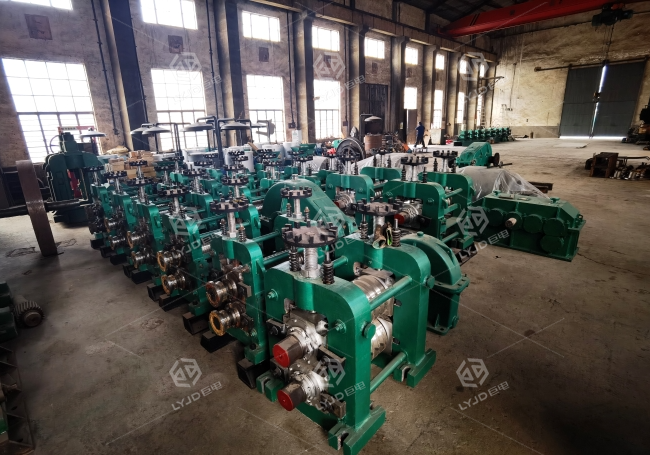Rolling is one of the most important manufacturing processes in the modern world.
In the process of metal processing, the working material passes between the rotating rolls through one or more pairs of rolls to reduce the thickness and make the thickness uniform, and the metal is deformed under the pressure between the continuously rotating rolls. Both shape and internal structure have changed. make it the desired shape.
The vast majority of all metal products produced today are rolled at some point in their manufacturing process.
Modern rolling mills are fully automatic, high-speed and high-capacity rolling mills that often include metallurgical processing of the rolled material to achieve the desired microstructure and mechanical properties of the rolled material.
The rolling process of the rolling mill is very perfect today. However, this level of perfection is not achieved by one invention, but by a large number of small continuous improvements over time.
Metal rolling mill were discovered in the Middle East and South Asia as early as 600 BC. are hand driven and used to flatten gold and silver in the manufacture of jewelry and art.
These mills are crude, but they use the same basic principles associated with the rolling process.
The first known rolling mill design in Europe dates back to 1485, thanks to Leonardo da Vinci. In one of his paintings, he described for the first time the possibility of "passing material" between two cylindrical rollers with parallel axes to modify its thickness. In this case it is also used for cold rolling of ductile materials, especially lead and tin etc.
The power used to drive the rolling mill has gone through four stages.
The first stage is the manual stage. At this stage, early rolling required little power, and hand-rolled rollers were used to flatten the metal for jewelry and artwork. In later machines, people turned an adjustable cross or crank, which were attached to the rollers. Humans can only roll softer metals such as gold, silver, tin, and lead.
In the second stage, the rolling mill uses hydraulic power. Harnessing the energy of flowing water in a river provides free power strong enough to roll harder metals such as iron. Hydropower has serious drawbacks. Drought and low temperatures may reduce water flow. Furthermore, the hydraulically powered rolls move in only one direction.
In the third stage, the steel rolling mill uses steam power. Steam power first appeared in the late 1700s thanks to the invention of James Watt. The steam engine created the physical power to replace labor and livestock.
Steel rolling mills of this era utilized power generated by steam engines. Steam engines were commonly used to power mills in the 1800s, and by the late 1800s they were the most popular source of power. Although it was powerful in powering it, the steam engine was largely inefficient.
In the fourth stage, the rolling mill uses electricity. The advantage is that power generation can be decoupled from the rolling mill, as power can be easily transferred from a remote generator to a motor directly connected to the rolling mill. Electric rolling mills first appeared around 1900. Electricity remains the choice for operations today.
This is our popular science today, welcome to pay attention to Luoyang Judian to learn more about steel rebar production line.

Please send us your request and we reply to you with in 24 hours.
Submit Request